Sweet cherry Bryansk pink: variety description, planting, care and pruning
Cherries prized for its delicious sweet fruit. Therefore, gardeners are trying to extend the fruiting time. Now the varieties of medium and late ripening have been created. The latter includes Bryansk pink.
Content:
- Description of the variety
- Site and seedling preparation
- Features of planting cherries
- Care Tips
- Tree pruning
- Diseases and pests
Description of the variety
Sweet cherry Bryanskaya pink belongs to the late varieties. The variety has a number of advantages: low growth, resistance to fungal diseases, frost resistance. This is also indicated by the name of the variety created by breeders A. Astakhov and M. Kanshina. It is obtained by selecting seedlings of black Muscat cherry.
The height of the tree is up to 4 m. The shape of the cherry crown is broad-pyramidal, the thickening is average. Skeletal branches are strong, resistant to sunburn. Young shoots are covered with smooth brown bark. The kidneys are small. The bark and flower buds tolerate frost well, but the ovary may die from recurrent frosts. The leaves are large, with a sharp top and large denticles. Bryansk cherry blossoms later than early varieties, in May. The flowers are small, with white petals, collected in bunches of 3 pieces. They are placed mainly on bouquet branches.
Ripe fruits weighing 4-5.5 g are pink-orange.
But during the ripening period, they are yellow. Then they are covered with a blush. Therefore, sometimes the variety is referred to as yellow cherries. A valuable feature of the fruit is its resistance to cracking. The pulp of the fruit is dense and juicy, yellow in color. The juice is colorless. The fruit tastes sweet and sour. The sugar content in them is about 14%. Fruits are valued for the presence in their composition of a large amount of vitamin C. It accounts for 14.2 mg per 100 g of the product. The stone is small, poorly separated from the pulp.
The sweet cherry variety Bryanskaya pink has some disadvantages:
- Low yield (up to 25 kg per tree).
- Enters fruiting late, in the 5th year.
- Self-infertility of the variety.
To get a good harvest of cherries, you need to plant them next to pollinators. The best ones will be:
- Tyutchevka
- Jealous
- Iput
Site and seedling preparation
Cherries are planted in the ground in early spring, before bud break. At later planting dates, the tree will not have time to take root and give growth. A seedling bought in the fall is added drop-in and left until spring. Planting in the fall is risky, the tree may not have time to take root.
How to properly prepare a site for planting:
- A sunny place for growing cherries is chosen, located on the south side of the site.
- The distance to the nearest building must be at least 3.5 m.
- If possible, choose a place on a hillock or a small mound. If it is not on the site, and the groundwater level is high (closer than 1.5 m), you can fill the mound yourself. But this must be done in advance, several months before planting. Drainage pipes can be laid and excess moisture removed from the site.
- Sweet cherry is not demanding on the composition of the soil. She does not like acidic dense soils.
- Prefers neutral or slightly alkaline. Decrease soil acidity the introduction of slaked lime or dolomite flour will help.
- The soil on the site should be loose, it is good to let moisture and air pass through. Cherry grows poorly on sandy soils.
It is best to choose a seedling one or two years old. Older trees do not tolerate replanting well. When buying, be sure to assess the condition root system: size, condition. If in doubt, you can prune one of the medium-sized roots. On the cut, it should be light.
Find a place vaccinations... If not, the seedling will be wild. The buds should be green, but not blooming. A seedling with leaves is not bought. You can assess the condition of the bark by scratching it with your fingernail. In this case, a green layer should be visible.
Features of planting cherries
A pit for planting cherries is prepared in advance, best of all in the fall:
- Its depth should be at least 60 cm, width 70 cm.
- Mix the laid out earth with two buckets of humus, complex mineral fertilizers and poured into the bottom of the pit in the form of a mound.
- A peg up to 1.5 m high is hammered, to which, after planting, the cherries are fixed with a soft twine in the shape of a figure eight.
- If the roots of the seedling are dried, they are immersed in water for a day. The ends of the roots are trimmed by a few millimeters. The root system is dipped into a clay mash with the consistency of sour cream.
- Place the seedling in the hole so that the root collar is 5 cm above ground level.
- Fill the hole with prepared soil, filling in the gaps between the roots.
- Gently compact by pressing the earth with the foot radially against the trunk.
- A roller of earth is formed around the trunk at a distance of 40 cm.
- Sprinkle with 2 buckets of water.
- Mulch the trunk circle with humus, peat, sawdust... The mulch layer should be no thinner than 5 cm.
Care Tips
After planting, cherries need to be watered regularly. 2 buckets of water are added every 2 weeks. If the temperature rises sharply, this can be done more often. But the soil should not be allowed to be waterlogged, the tree may die. The soil is loosened several times during the season to provide air access to the roots. At the same time, weeds that harm the seedling are destroyed.
The area near the tree can be sown with grass, but the circle with a radius of 50 cm is left clear of it.
Feeding cherries is carried out 3 years after planting. For the first 2 years, the plant will receive useful substances laid down during planting. In the spring, add up to 3 buckets of humus, 100 g of urea (Urea). Fertilizers are buried to a depth of 10 cm, then watered with water. In the future, the fertilizer application rates are doubled.
In addition, cherries are additionally fed with infusions mullein, chicken manure. Foliar dressing is carried out by spraying the plant with a carbamide solution. Dissolve 30 g of the drug in a bucket of water. Processing is carried out at the beginning of summer.
Tree pruning
Cherry pruning is carried out during the period when it is at rest, before budding. Trimming can be formative. With its help, you can give the cherry shape:
- Bushy
- Veernaya
- Stamp
- Pyramidal
The lower the tree, the easier it is to protect it from frost, treat it from pests. Fan-shaped cherries can be placed near the wall of the house. In the summer, they carry out sanitary pruning, removing damaged, broken branches. The ends of the shoots are pinched or cut off with a secateurs to form flower buds, tops growing vertically or inside the crown.
Diseases and pests
Sweet cherry Bryansk pink is resistant to diseases of sweet cherries to moniliosis, clotterosporosis, coccomycosis. But trees can be affected by milky sheen and bacterial cancer. A milky sheen can be seen by the gray coating that covers the leaves. The wood turns brown and dries up. You can fight the disease only by removing the diseased parts of the plant or the entire tree. For the prevention of the disease, it is necessary to lubricate the cut points with oil paint, pre-treated with copper sulfate.
Bacterial cancer manifests itself as ugly growths on the root collar. The disease leads to the death of plants. Prevention consists in spraying cherries bordeaux liquid after harvest. The growths are removed mechanically, the roots are disinfected with a 1% solution of copper sulfate. Garden tools are treated with formalin. In the place where the affected tree grew, no new 5 years are planted.
Sweet cherry, its leaves and fruits suffer from pests:
- Cherry fly, whose larvae spoil the fruit. You need to fight the cherry fly in the fall. Before the onset of frost, they dig up a site under a tree. This leads to the death of insects from frost. In late May or early June, the tree is treated with an insecticide (Intavir, Karate).
- A leaf aphid that sucks sap from young leaves and shoots. Leaf aphids settle on young shoots of sweet cherries, multiply rapidly. Leaves and shoots curl and dry out. If there are a lot of aphids, the plant may die. Aphids are destroyed by treatment with Nitrafen, Karbofos at the beginning of bud break. For prevention, the tree is thinned out by removing tops and thickened branches.
- Californian scale insect, covering shoots and sucking sap. Californian scale insects are small insects covered with strong shields. They sit motionless on the branches, so it is difficult to notice them. To combat the pest, the tree is treated with a 3% carbamide solution, first before flowering, then once a month. You can use Tagore treatments before flowering, Alfacin all summer.
More information can be found in the video:



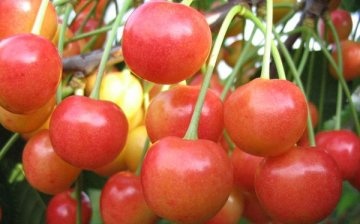
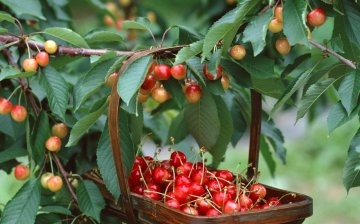

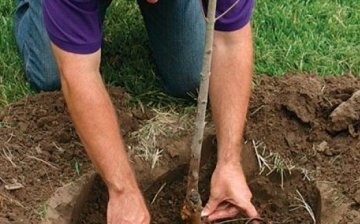

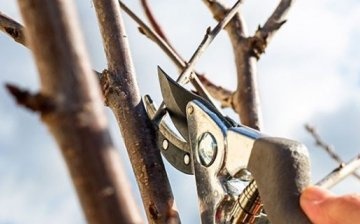
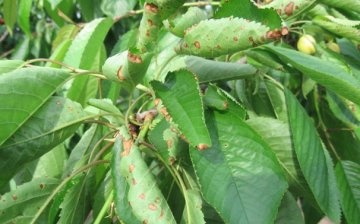







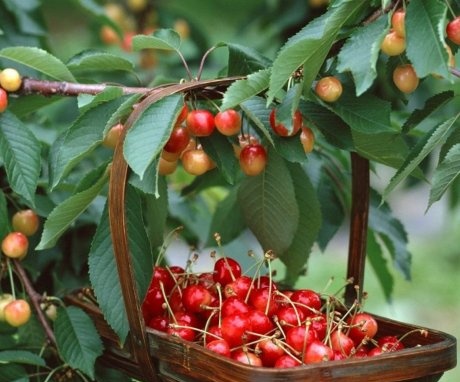
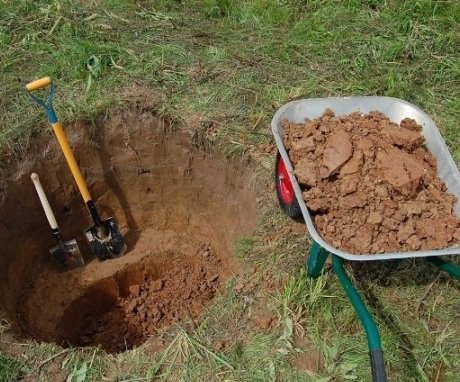


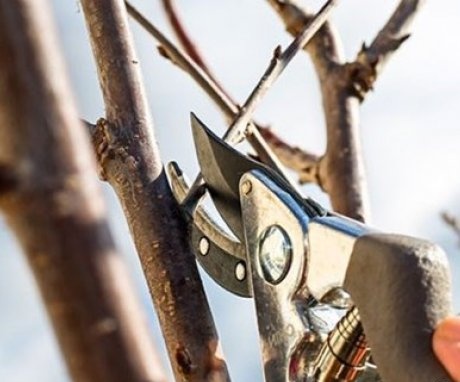
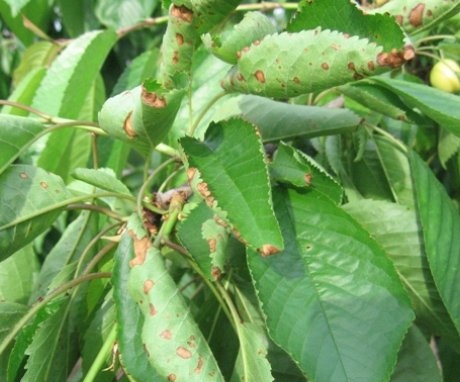
I love this variety of cherries. But I didn't know what it was called. I want to plant this variety on my site. The only pity is that it begins to bear fruit in the 5th year. Quite late. The main thing is that the tree still takes root safely, otherwise it will be a pity for its labors.
This cherry is delicious, but it really does bear little fruit, unfortunately, the variety looks beautiful and is never bright and very ripe. We have only one such cherry and it is really better to plant it near pollinators.